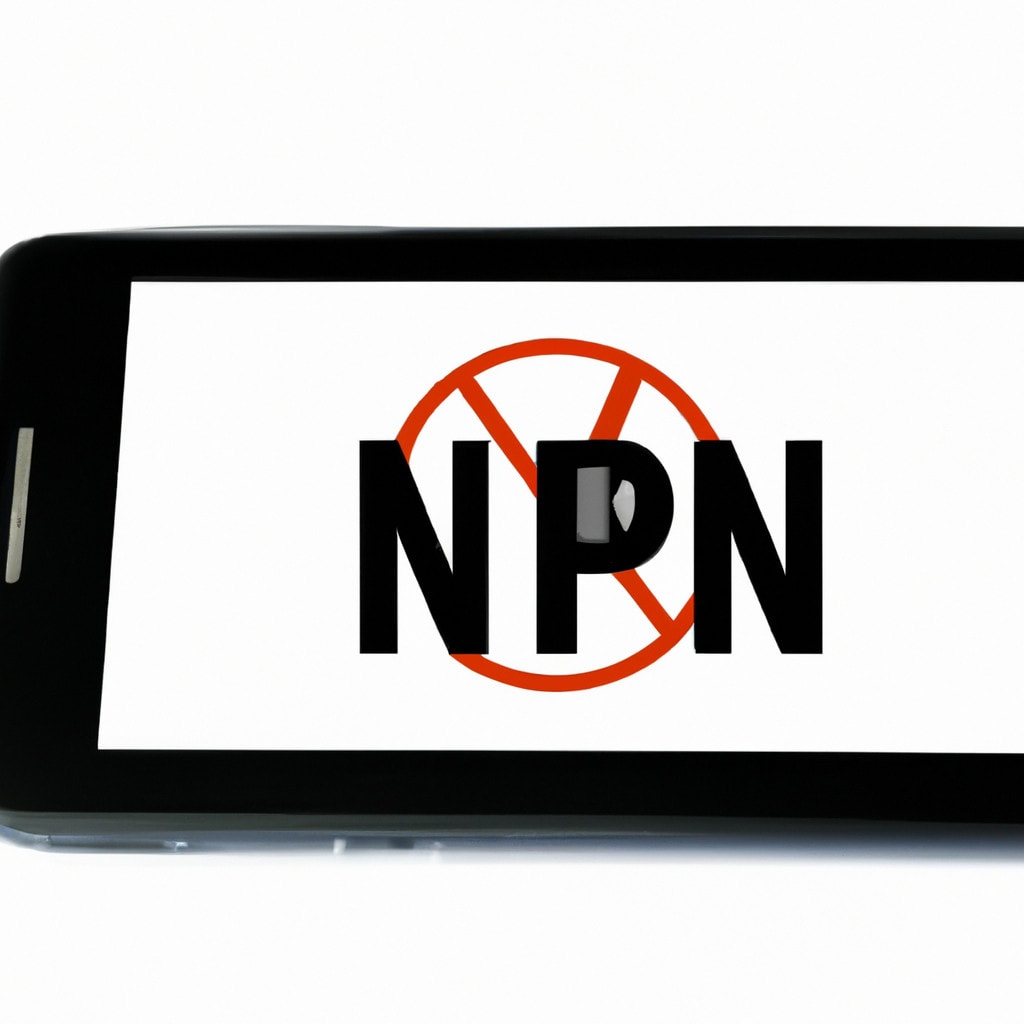The Untold Story of Duo VPN Integration: A Deep Dive into Secure Remote Access
In the modern era of digitalization, cybersecurity has become a top priority for organizations worldwide. With employees often working remotely, there is an increased need for secure connections to access sensitive data and systems. This is where Virtual Private Networks (VPNs) come into play.
Duo VPNis an advanced and reliable solution for enhancing network security, especially for organizations looking for seamless integration with their existing systems. In this article, I will guide you through the process of effectively utilizing Duo VPN to secure remote connections.
# Decoding Duo VPN: Understanding its Importance as a Security Solution
Duo VPN is a versatile security solution that complements an organization’s existing VPN infrastructure. It provides two-factor authentication (2FA) to ensure that only authorized users can access the secure network. Deploying Duo VPN makes it much more difficult for cybercriminals to infiltrate your business network.
So, without any further ado, let’s dive into the details of how to use Duo VPNand unlock its full potential for securing remote access.
# Setting the Stage: Preparing Your Network Infrastructure for Duo VPN Integration
1. Laying the foundation: Before implementing Duo VPN, ensure that your organization has a functioning VPN solution in place. Popular options include Cisco AnyConnect, OpenVPN, and Pulse Connect Secure.
2. Choosing an authentication method: Duo VPN supports various authentication methods such as push notifications, SMS messages, phone calls, and U2F tokens. Select the most suitable method based on your organization’s needs and preferences.
3. User enrollment: Enable users to enroll with Duo VPN by visiting the self-service portal or using bulk enrollment options like CSV import or Active Directory synchronization.
# Integration Time: Configuring Duo VPN with Your Existing VPN Solution
Integrating Duo VPN with your existing VPN solution requires security expertise and technical know-how. Here, I will provide an example of integrating Duo VPN with Cisco AnyConnect using RADIUS for authentication.
Configuring the Duo Authentication Proxy
1. Download and install: Download the Duo Authentication Proxy for your operating system from the Duo website and follow the installation instructions.
2. Configuration file: Locate and edit the `authproxy.cfg` configuration file to add your RADIUS and LDAP server settings. LDAP is optional but recommended for user group-based access control.
3. Test connectivity: Test the connection between the Duo Authentication Proxy and your RADIUS and/or LDAP servers using the `authproxy_connect` command.
4. Start the proxy: Run the Duo Authentication Proxy as a service or daemon, depending on your operating system.
Integrating Cisco AnyConnect with Duo VPN
1. Configure AnyConnect: Log into the Cisco AnyConnect management interface and navigate to the “AAA/Local Users” section. Select “RADIUS” as the primary authentication method and configure it to use the Duo Authentication Proxy.
2. Test authentication: Attempt to authenticate with a test user from the AnyConnect client to verify that the integration works.
# Making it Yours: Customizing Duo VPN for Your Organization’s Needs
Duo VPN offers a plethora of customization options to tailor the user experience according to the organization’s requirements.
1. User group-based policies: Define granular access control policies based on user groups to restrict VPN access to specific sets of users.
2. Geolocation-based restrictions: Implement geofencing policies to limit VPN access to specific geographical regions.
3. App-specific rules: Apply different access policies for specific applications or services within your VPN.
4. Reporting & monitoring: Use Duo’s robust reporting tools to monitor VPN usage, track anomalies, and detect potential security threats.
# The Open Loop: The Future of Duo VPN and Network Security
Utilizing Duo VPN empowers organizations to maintain a secure and flexible remote work environment. However, the evolving nature of cybersecurity threats demands constant vigilance and innovation. As such, stay abreast of the latest security practices, and keep an eye on the future advancements in Duo VPN and network security solutions.
By implementing Duo VPN and adhering to best security practices, you can significantly strengthen your organization’s security posture and protect sensitive data from potential breaches. In our ever-connected digital world, the need for robust cybersecurity solutions like Duo VPN is undeniable. This comprehensive guide on how to use Duo VPNshould provide you valuable insights into its deployment, customization, and benefits. So, gear up and embark on your journey to secure remote access with Duo VPN.
Best Free VPN 2023 | The ACTUAL 3 Best Free VPN to use in 2023
Duo Two Factor Authentication Setup
How does Duo work with VPN?
Duo is a Two-Factor Authentication (2FA) solution that adds an extra layer of security when accessing your VPN. It works by requiring users to provide additional proof of their identity, usually in the form of a temporary code or push notification, alongside their usual username and password.
When using Duo with a VPN, the process typically follows these steps:
1. The user enters their username and password in the VPN client.
2. After successful primary authentication, the VPN client sends a request to the Duo Authentication Proxy.
3. The Duo Authentication Proxy communicates with the Duo Cloud Service to determine the user’s preferred method of 2FA.
4. The user receives a push notification on their enrolled device, a phone call, or an SMS with a one-time passcode, depending on their chosen method.
5. The user approves the push notification or enters the one-time passcode into the VPN client.
6. The Duo Cloud Service verifies the response, and if successful, the user is granted access to the VPN.
By integrating Duo with your VPN, you can significantly increase the overall security, as it makes it much more difficult for unauthorized users to gain access even if they have obtained a user’s password. This extra protection is crucial, especially for organizations dealing with sensitive data or working remotely.
Does Duo have a VPN?
Duo itself does not offer a Virtual Private Network (VPN) service. However, Duo provides a Two-Factor Authentication (2FA) solution that can be integrated with various VPN providers to add an extra layer of security to the VPN connections. By using Duo’s 2FA, users must verify their identity through a second factor such as a mobile device before gaining access to the VPN network.
How to use Duo for Cisco VPN?
Using Duo Security for your Cisco VPN is an excellent way to enhance the security of your virtual private network. Duo provides a two-factor authentication (2FA) method, adding an extra layer of protection. Here’s a step-by-step guide on how to configure and use Duo for Cisco VPN:
1. Sign up for Duo: If you haven’t already, sign up for a Duo Security account. Choose the appropriate plan for your organization and complete the registration process.
2. Create a Duo-protected VPN: Log into your Duo admin panel and navigate to “Applications” in the left-hand menu. Click on “Protect an Application,” search for “Cisco” in the search bar, and then select the Cisco VPN application you want to protect. Configure the application settings as needed, including your Cisco VPN server address, and save your changes.
3. Integrate Duo with your Cisco VPN: Download the Duo Authentication Proxy software from the Duo website and install it on a server within your network. Configure the proxy settings to match your Cisco VPN settings, according to the documentation provided by Duo. Test the integration to ensure that it works correctly.
4. Configure Cisco VPN client: Update your Cisco VPN client settings to point to the Duo Authentication Proxy server. This will enable your users to authenticate through Duo when connecting via the VPN client.
5. Enroll users in Duo: Ensure that all users who need to access the VPN are enrolled in Duo, either manually or using the bulk enrollment feature. Users can complete their enrollment by following the instructions sent to them via email.
6. Test the setup: To verify that everything is working correctly, have a user attempt to connect to the VPN using their Cisco VPN client. They should be prompted to authenticate through Duo, using their chosen 2FA method (e.g., push notification, SMS, phone call, or security key).
7. Monitor and manage: Use the Duo admin panel to monitor VPN access attempts, manage enrolled users, and configure any additional settings as needed.
By following these steps, you can successfully implement Duo Security for your Cisco VPN, providing an extra layer of protection for your organization’s network.
Is Duo VPN free?
Duo VPN is a virtual private network service that provides enhanced security for accessing corporate resources remotely. Although Duo offers various security solutions, their VPN service is not free. It’s part of their paid plans which are targeted at businesses and organizations to secure their remote access infrastructure. You can find more information about their pricing on the Duo Security website.
How to set up and configure Duo VPN for enhanced security in the context of remote working?
In today’s world, remote working has become increasingly popular, and with that comes the need for enhanced security when accessing company resources. Using a Virtual Private Network (VPN) is one way to ensure secure data transmission, but adding a second layer of protection with Duo VPN can further enhance the security of your remote work environment.
What is Duo VPN?
Duo VPN is a two-factor authentication (2FA) solution that adds an extra layer of security to your VPN access by requiring users to confirm their identity before connecting to the network. This reduces the risk of unauthorized access and ensures that only legitimate users are granted access to your company’s sensitive information.
Setting up Duo VPN
Here’s a step-by-step guide to set up and configure Duo VPN for enhanced security:
1. Sign up for a Duo account:
Visit the Duo Security website and sign up for a free trial or paid account depending on your needs.
2. Download and install Duo Authentication Proxy:
Download the appropriate version of Duo Authentication Proxy for your operating system from the Duo Security website, and then follow the installation instructions provided.
3. Configure the Duo Authentication Proxy:
Open the configuration file for the Duo Authentication Proxy (usually called ‘config.ini’) and enter the required information, such as your Duo API credentials, your VPN server’s hostname or IP address, and other necessary details related to your specific VPN setup.
4. Integrate Duo with your VPN:
You’ll need to modify your VPN server’s configuration settings to enable Duo as an additional authentication method. This may involve adding RADIUS parameters, specifying the Duo Authentication Proxy’s hostname or IP address, and adjusting other settings within your VPN server’s administration console.
5. Test the Duo VPN integration:
To ensure that Duo is functioning correctly with your VPN, try connecting to the VPN as a user. You should receive a Duo push notification or be prompted for a code from the Duo Mobile app. Verify that you can successfully authenticate and access your company’s network.
6. Enroll your users:
Finally, have your users install the Duo Mobile app on their smartphones and follow the process to enroll their devices. It’s essential to provide them with instructions on how to use Duo for VPN authentication and troubleshooting information if they encounter any issues.
By following these steps, you’ll have a more secure remote working environment with Duo VPN, allowing employees to securely access sensitive company data while reducing the risk of unauthorized access.
What are the best practices for using Duo VPN alongside other security tools in the context of data protection?
Using Duo VPN alongside other security tools can greatly enhance your data protection strategy. Here are some best practices for effectively implementing Duo VPN with other security solutions:
1. Layered security approach: Implement multiple layers of security to create a more robust and secure network. This can include using firewalls, intrusion detection systems (IDS), intrusion prevention systems (IPS), and antivirus software in addition to Duo VPN.
2. Two-Factor Authentication (2FA): Enable 2FA in the Duo VPN to add an extra layer of protection. This requires users to provide additional proof of identity, such as a fingerprint or one-time code sent to their mobile device, before accessing the network.
3. Encryption: Encrypt all data transmitted through the VPN to protect it from unauthorized access. Use strong encryption protocols like SSL/TLS, IPSec, or WireGuard to secure your data.
4. Access control: Implement strong access controls to limit who can access your VPN and what they can do once connected. Restrict access to authorized users and devices, and enforce least privilege principles to minimize the risk of unauthorized access.
5. Patch management: Ensure that all devices connected to your VPN are regularly updated and patched to protect against known vulnerabilities. This includes both the VPN server and client devices.
6. Logging and monitoring: Capture and analyze logs from your Duo VPN and other security tools to identify potential threats, detect incidents, and improve overall security. Regularly review logs and use automated tools, like a Security Information and Event Management (SIEM) system, to help analyze and correlate data from different sources.
7. Security awareness training: Educate your users on the importance of data protection and online safety. Teach them about common cybersecurity threats, how to prevent them, and how to securely use the VPN and other security tools.
By following these best practices, you can effectively use Duo VPN alongside other security tools to create a comprehensive data protection strategy.
How to troubleshoot common issues when using Duo VPN in the context of multi-factor authentication?
When using a Duo VPN in the context of multi-factor authentication (MFA), you may come across some common issues that need troubleshooting. Here are some steps to help you resolve these problems:
1. Check your network connection:
Ensure that your internet connection is stable and reliable. A weak or unstable connection can cause issues with Duo VPN and MFA.
2. Verify your login credentials:
Double-check that you’ve entered the correct username and password for your VPN account. Typos or incorrect information can lead to authentication failures.
3. Inspect MFA configuration:
Confirm that the MFA settings within your VPN are properly configured. This includes verifying that the correct integration key, secret key, and API hostname have been entered.
4. Test your second authentication factor:
Make sure that your second authentication factor (e.g., smartphone, hardware token, or SMS) is working correctly. For instance, if you’re using a smartphone, ensure that the Duo Mobile app is installed, updated, and properly configured.
5. Update your VPN client:
Outdated VPN clients can cause compatibility issues with MFA. Make sure that you’re using the latest version of your VPN client software.
6. Review firewall settings:
Firewall settings might be blocking your VPN connection or communication with Duo’s cloud service. Check these settings to ensure that they’re not causing connectivity problems.
7. Examine VPN server logs:
VPN server logs can provide valuable information about any issues encountered during the authentication process. Look for any errors or warnings that could indicate a problem with the Duo VPN setup or MFA.
8. Contact Duo support:
If none of the above steps resolve your issue, reach out to Duo support for further assistance. They can help diagnose the problem and provide guidance on how to fix it.
By following these troubleshooting steps, you can effectively address common issues when using Duo VPN with multi-factor authentication and ensure a secure and seamless connection.





